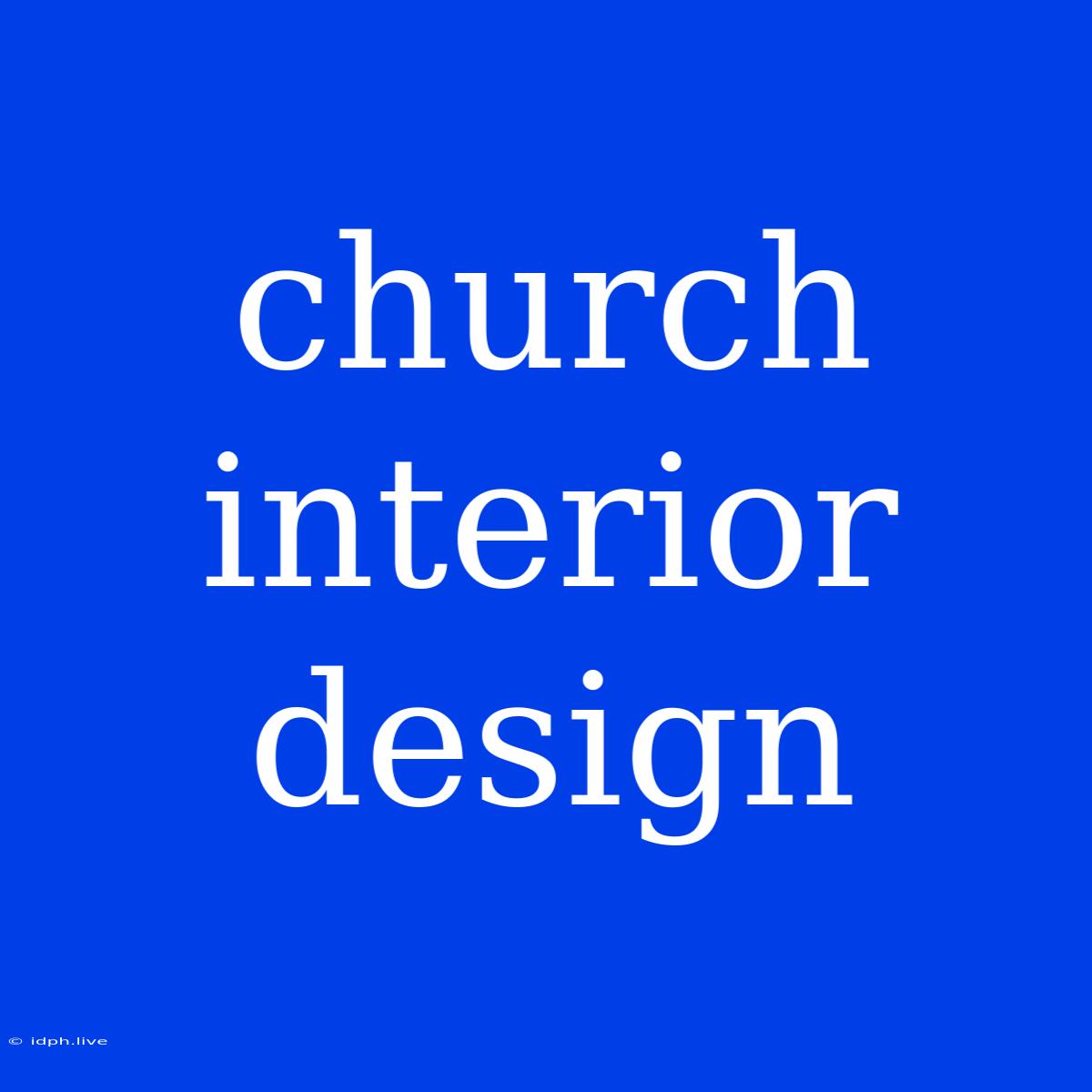Church Interior Design: Creating a Sacred and Welcoming Space
Church interior design is a delicate balancing act. It must simultaneously evoke a sense of awe and reverence, while also fostering a sense of warmth and belonging. Achieving this requires careful consideration of various elements, from the architectural layout to the choice of furniture and lighting.
Essential Elements of Church Interior Design
1. Architectural Layout:
- Nave: The main body of the church should be spacious and inviting, allowing for easy circulation and a sense of openness.
- Altar: The focal point of the church, the altar should be positioned prominently and designed to draw attention.
- Pulpit: The pulpit should be positioned to facilitate clear communication between the preacher and the congregation.
- Choir Loft: If included, the choir loft should be visually integrated with the overall design, providing an elegant backdrop for musical performances.
2. Color Palette:
- Traditional: Warm, earthy tones like beige, brown, and gold are often used to create a sense of comfort and tradition.
- Modern: Crisper colors like white, gray, and blue can be incorporated to create a more contemporary feel.
- Symbolic Colors: Specific colors can have deeper symbolic meanings, for example, blue often represents faith and trust.
3. Lighting:
- Natural Light: Maximize the use of natural light through large windows.
- Artificial Light: Warm, diffused lighting is ideal for creating a calming atmosphere. Lighting should highlight key architectural features and artwork.
- Dimmable Lights: This allows for flexibility in adjusting the ambiance for different services and events.
4. Furniture:
- Pew Design: Comfort and functionality are key when choosing pews. Consider the seating capacity and ensure comfortable seating for long services.
- Alter Furniture: The altar should be adorned with appropriate furniture, such as candlesticks, vases, and a lectern.
- Sacristy Furniture: This space requires functional and organized furniture for storage of liturgical items.
5. Artwork and Decor:
- Religious Art: Artwork should be chosen thoughtfully to enhance the spiritual atmosphere and inspire contemplation.
- Sculptures: Sculptures can add a sense of depth and visual interest, while also serving as symbolic representations of faith.
- Floral Arrangements: Flowers can add beauty and vibrancy to the space, while also representing new life and renewal.
Creating a Welcoming Atmosphere
- Acoustic Design: Ensure the church has good acoustics to facilitate clear sound and enhance the beauty of music.
- Accessibility: Pay careful attention to accessibility for individuals with disabilities.
- Temperature Control: Maintain a comfortable temperature year-round.
- Maintenance and Cleanliness: A clean and well-maintained space projects an image of care and respect.
Ultimately, a successful church interior design should reflect the unique identity and needs of the congregation, while fostering a spirit of faith, community, and worship.

